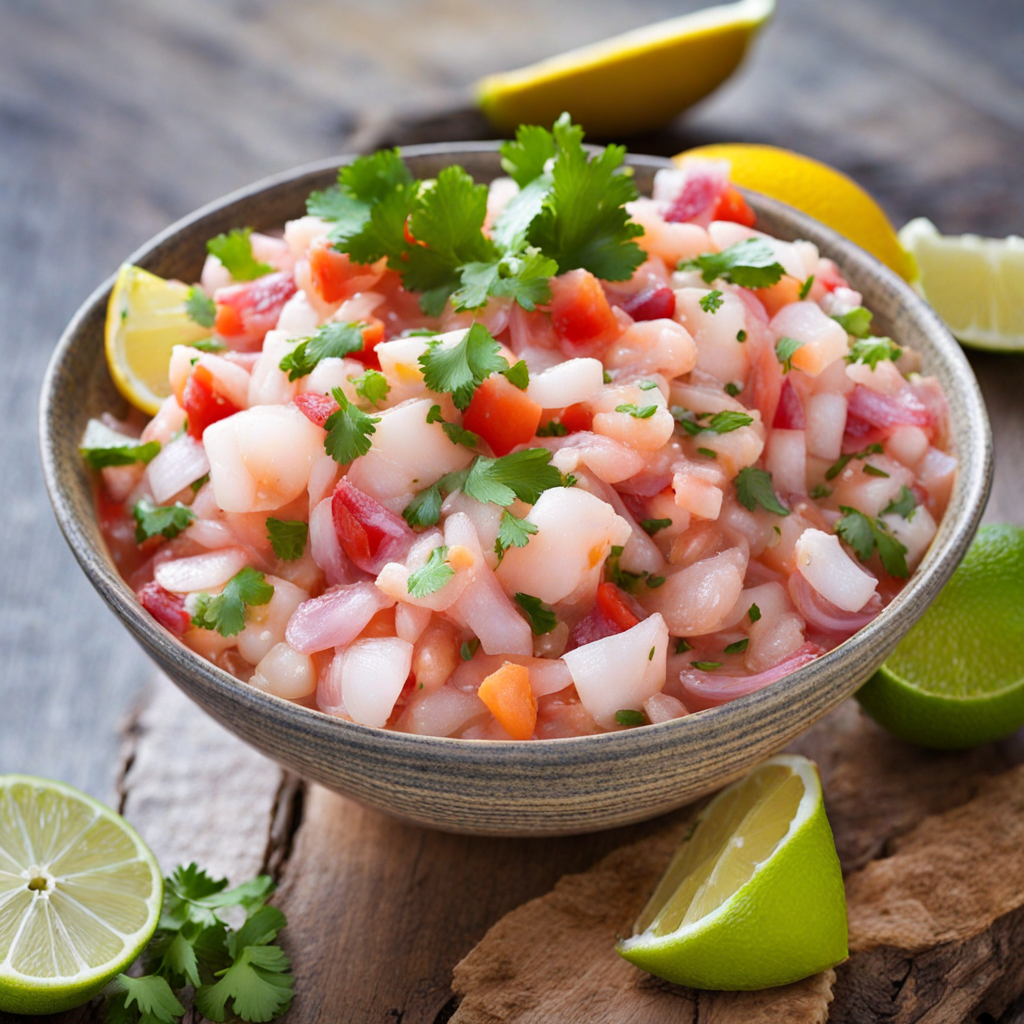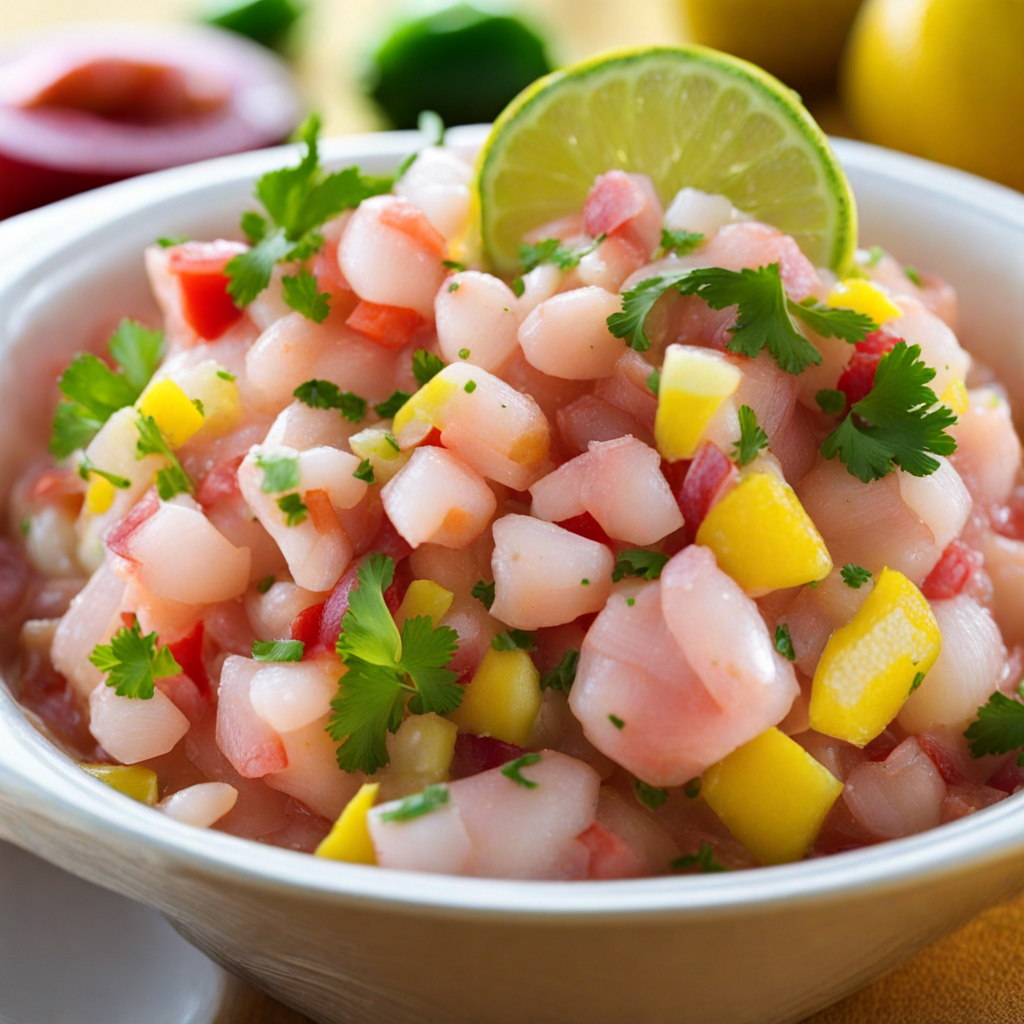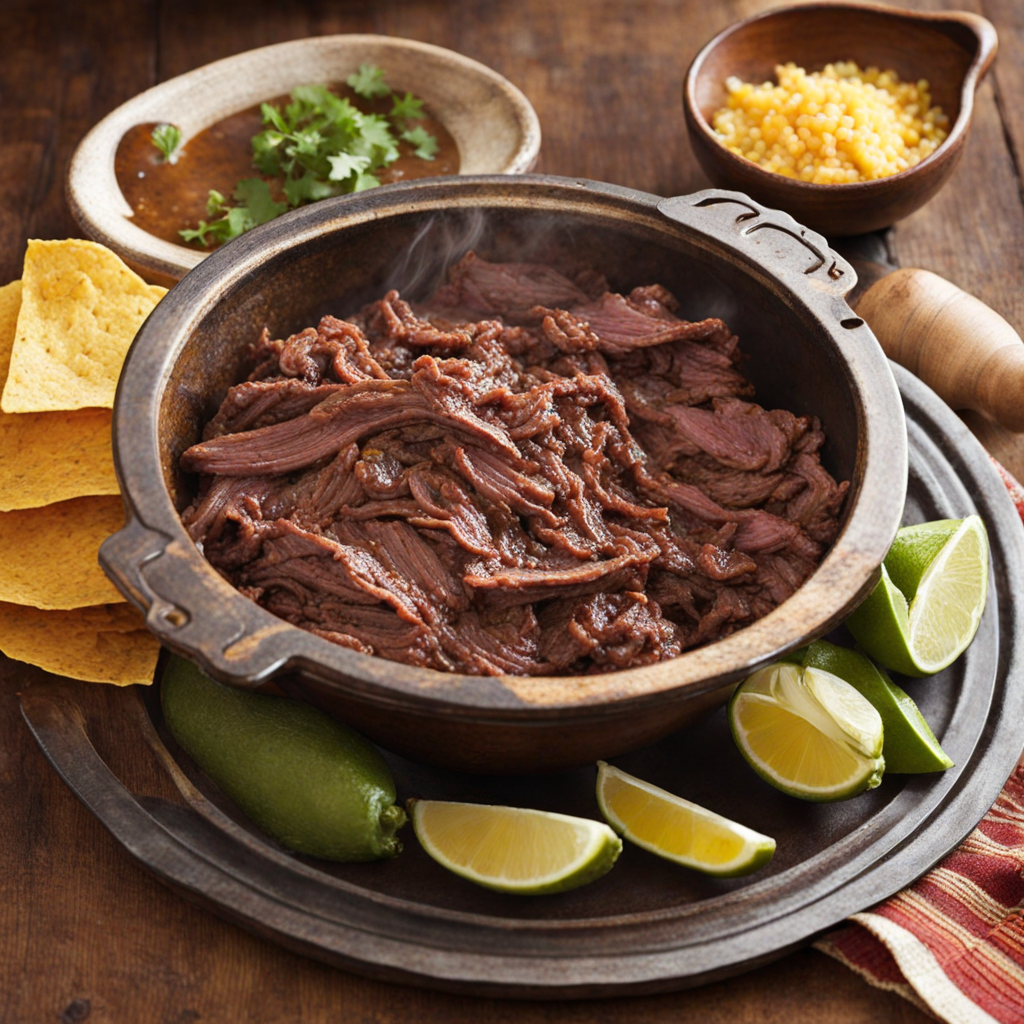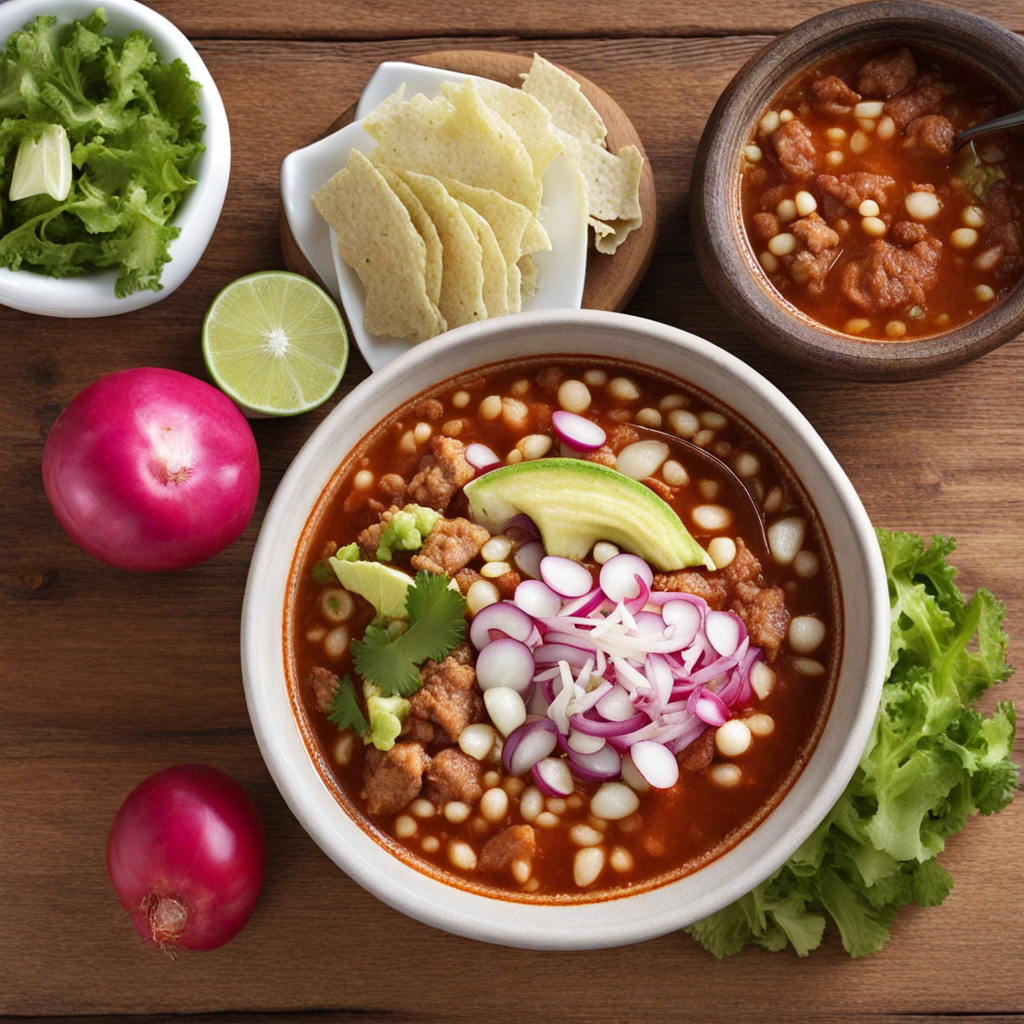Ceviche
Ceviche is a renowned dish originating from the coastal regions of Latin America, particularly associated with Mexico and Peru. The dish is believed to have ancient roots, dating back to pre-Columbian times when the indigenous peoples of the region utilized local fish and marinated them with citrus fruits. Over the centuries, ceviche has evolved, influenced by various cultural and culinary practices, including Spanish colonization, which introduced new ingredients like onions and tomatoes. Today, ceviche is celebrated not only as a staple in Mexican cuisine but also as a symbol of culinary innovation and regional diversity. At its core, ceviche is a dish made from fresh, raw fish or seafood that is cured in citrus juices, predominantly lime or lemon. The acidity of the citrus effectively "cooks" the fish without heat, altering its texture and flavor profile. This unique preparation method results in a refreshing and zesty dish that highlights the freshness of the seafood. The flavors of ceviche can range from bright and tangy to slightly spicy, depending on the accompanying ingredients and seasonings. The balance between the acidity of the citrus, the sweetness of the seafood, and the heat from peppers creates a delightful taste experience. Preparation of ceviche is relatively straightforward but requires high-quality, fresh ingredients to ensure safety and flavor. The process typically begins with selecting the seafood, which can include white fish such as snapper, tilapia, or mahi-mahi, as well as shellfish like shrimp, octopus, and scallops. Once
How It Became This Dish
The Engaging History of Ceviche: A Culinary Jewel of Mexico Ceviche, a vibrant and tantalizing dish that has gained international acclaim, is deeply rooted in the coastal cultures of Latin America, with its origins often traced back to the ancient civilizations of Peru. However, its evolution and cultural significance in Mexico tell a compelling story of regional adaptation, culinary innovation, and the interplay of various cultural influences. #### Origins and Early Influences Ceviche’s roots can be traced back over 2,000 years, primarily to the Moche civilization along the northern coast of Peru. Archaeological evidence suggests that the Moche people prepared fish dishes using fermented fruit juices, likely from the local tumbo fruit. This ancient technique laid the groundwork for what would evolve into ceviche. The Spanish conquest of the Americas in the 16th century introduced new ingredients, such as citrus fruits, which were then integrated into local cuisines. This fusion of indigenous practices and European influences marked the beginning of ceviche as we know it today. While Peru is often celebrated as the birthplace of ceviche, Mexico played a vital role in its development. The coastal regions of Mexico, particularly in states like Sinaloa, Baja California, and Veracruz, embraced ceviche, adapting it to their unique local ingredients and culinary traditions. The indigenous populations along these coasts had long understood the importance of using fresh seafood, and their methods complemented the evolving ceviche recipes that incorporated local flavors. #### Cultural Significance In Mexico, ceviche is not just a dish; it is a cultural icon that resonates with the identity of coastal communities. Fresh fish, often caught just hours before consumption, is marinated in citrus juices, typically lime or lemon, along with a medley of herbs, spices, and vegetables. Ingredients such as cilantro, onions, tomatoes, and chili peppers are common, contributing to the dish's vibrant colors and refreshing flavors. The preparation of ceviche is often a communal activity, reflecting the social and familial bonds that are central to Mexican culture. It is a dish that is frequently served during celebrations, gatherings, and festivals, embodying the spirit of sharing and hospitality. In coastal towns, ceviche is a staple at beachside eateries, where the ocean's bounty is celebrated and savored by locals and tourists alike. #### Regional Variations As ceviche spread throughout Mexico, distinct regional variations emerged, showcasing the diversity of ingredients and culinary styles. In Sinaloa, for instance, ceviche is often made with freshly caught shrimp and is characterized by the addition of tomato and avocado, creating a creamy and flavorful concoction. Baja California, on the other hand, is known for its fish ceviche, typically prepared with white fish like tilapia or snapper, complemented by a zesty marinade of lime juice and a touch of hot sauce. Veracruz offers yet another variation, featuring a unique twist with the inclusion of fruits such as mango or pineapple, enhancing the dish's sweetness and adding a tropical flair. The use of coconut in some preparations adds a creamy richness that contrasts beautifully with the acidity of the marinade. These regional adaptations not only highlight local ingredients but also reflect the cultural influences that have shaped Mexican cuisine over centuries. #### The Modern Era In the 20th century, ceviche began to gain recognition beyond its coastal roots, as Mexican cuisine garnered international attention. The rise of culinary tourism and the globalization of food culture allowed ceviche to emerge as a symbol of Mexican gastronomy. Chefs began to experiment with the dish, incorporating modern techniques and innovative presentations while staying true to its traditional roots. The late 20th and early 21st centuries saw a resurgence of interest in ceviche, particularly in urban areas where food culture thrived. Restaurants dedicated to seafood and ceviche began to flourish, showcasing the dish in various forms, from classic to avant-garde. The rise of food festivals and culinary events further popularized ceviche, with chefs competing to create the most inventive and delicious interpretations. Moreover, the accessibility of fresh seafood and the growing trend of raw dishes contributed to ceviche’s ascent in the culinary world. As health-conscious diners sought lighter, refreshing options, ceviche stood out as an ideal choice, celebrated for its clean flavors and nutritional benefits. #### Ceviche in Contemporary Cuisine Today, ceviche has transcended its origins, becoming a global phenomenon. It is featured on menus in high-end restaurants, casual eateries, and food trucks alike, often reimagined to suit contemporary tastes. Chefs continue to innovate, introducing elements such as fusion cuisines, where Asian flavors or Mediterranean ingredients intertwine with traditional Mexican ceviche. Despite these modern adaptations, the essence of ceviche remains unchanged. It continues to be a celebration of freshness, flavor, and the ocean's bounty. Whether enjoyed in a bustling coastal town or a trendy urban restaurant, ceviche evokes a sense of place, connecting diners to the rich cultural heritage of Mexico. #### Conclusion Ceviche is more than just a dish; it is a testament to the resilience and adaptability of culinary traditions. Its journey from ancient Peru to the shores of Mexico reflects the dynamic interplay of cultures, flavors, and ingredients that define the region's gastronomy. As ceviche continues to evolve, it retains its cultural significance, serving as a delicious reminder of the rich culinary history that connects past and present. In every bite, ceviche tells a story of community, celebration, and the enduring legacy of the ocean’s gifts—a true jewel of Mexican cuisine.
You may like
Discover local flavors from Mexico







